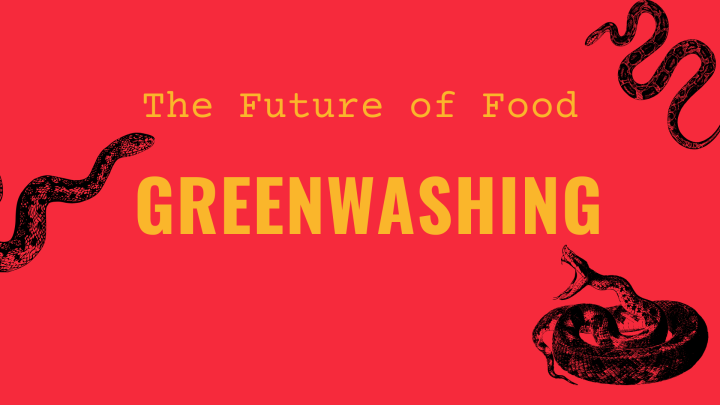Sustainable here, ecological there. Every company nowadays claims to be sustainable, green, good for the environment, etc. But if companies would try to deceive you by marketing something as green which really isn’t. This is a common practice and its called greenwashing.
But what does greenwash really means?
Defined by the Cambridge Dictionary: “to make people believe that your company is doing more to protect the environment than it really is”.
Will Kenton from Investopedia defines it as “the process of conveying a false impression or providing misleading information about how a company’s products are more environmentally sound. Greenwashing is considered an unsubstantiated claim to deceive consumers into believing that a company’s products are environmentally friendly.”
Sins of Greenwashing (by TerraChoice)
“In 2007, in an effort to describe, understand and quantify the growth of greenwashing, TerraChoice (acquired by UL), developed and launched a study of environmental claims made on products carried on category-leading big box store shelves. Based on the results of the original study and subsequent studies, the Seven Sins of Greenwashing were developed to help consumers identify products that made misleading environmental claims.”(TerraChoice, UL.)
Let me show you with a beautiful video and lovely background music the seven sins of greenwashing developed by TerraChoice (acquired by UL):
Here also in text form unedited from TerraChoice (UL)
I find some of these seven sins a bit harsh, but it gives you the idea. In summary
- Greenwashing is an attempt to capitalize on the growing demand for environmentally sound products.
- Greenwashing can convey a false impression that a company or its products are environmentally sound.
- Genuinely green products back up their claims with facts and details.
How Can Greenwashing Apply to Food?
As Butler, Davidian & Remedios from Willms & Shier Environmental Lawyers LLP write: “Greenwashing is a form of “food fraud”: the misrepresentation or adulteration of a food product for financial gain. Food fraud can include product substitution or alteration, mislabelling and misrepresentation about the origin, content, or manner in which the food product was prepared.
Consumers are increasingly willing to pay a premium for food they believe to be organic, local or produced using more environmentally friendly practices. Such consumers seek out organic foods, and foods with low carbon impacts. Food producers, processors or distributors who engage in food truthiness seek the financial benefit of selling organic, green or sustainable products, without paying the additional expenses associated with meeting those standards.” (Butler et al., 2018)
For example: “A 2019 class-action lawsuit against Nestle alleges the food giant’s “sustainably sourced cocoa beans” are nothing of the sort. Not when production of the key ingredient in the company’s chocolate products — including its Butterfinger and Baby Ruth bars, Nesquik chocolate milk, Toll House chocolate chips and hot cocoa mix (seen above) — is helping drive massive deforestation in West Africa. The suit also claims the cocoa comes from farms that use child and slave labor, which Nestle (sort of) responds to here.” (truthinadvertising.org, 2020)
Bobby Peterson, a guest writer for the The Sustainability Cooperative gives you 4 tips to defend yourself against greenwashing:
1. Look at Labels, Not Packaging.
Some of the most blatant examples of greenwashing use packaging to convey that a food is green. The packaging may be, well, green! Or, as in the potato chip example, it may be earthy. It may have pictures of the planet, or wheat fields, or may show apple-cheeked farmers in the fields. It will look different than regular food packages, which are often in bright, primary colors.
Remember that packaging like this doesn’t necessarily mean the ingredients are all natural. Food marketers — even the ones employed by health food companies, sadly — have become very adept at getting consumers to make connections between the appearance and the reality. It’s just not necessarily there.
The solution is to read the labels. All food marketed in the U.S. has to contain all the ingredients on its label. Make the label your friend. It will tell you whether your vegetable stock for soup is made of hydrogenated powder or actual vegetables.
2. Be Cautious About Environmentally Friendly Slogans.
Another greenwashing ploy, used in both packaging and advertising, is to use slogans that imply environmentally friendly products. They may say “good for the earth” or “for your good health.” These are no different than your run-of-the-mill “Mmm … mmm good” slogan, or any other ad campaign. They’re designed to get sales from green-conscious consumers.
This form of greenwashing can be done by companies with no penalty. They aren’t, after all, saying their products are green, sustainable or healthy. They’re just strongly implying it.
The solution is to become more conscious of how misleading this kind of slogan can be. Remember: a slogan is not proof.
3. Look for Proof of Green Practices.
So, what is proof? There are legitimate certifications for environmentally friendly and healthy food.
Consumers should be very wary of labels they cannot research. While USDA Organic and Green Seal are legitimate and verifiable, not all labels are. A few years ago, a company named Tested Green was targeted by the U.S. Federal Trade Commission for false claims. It turned out companies could essentially buy the Tested Green label for $200 to $500. No real certification process was involved.
The solution is to research any certifications you see.
4. Be Aware of the Variety of Green Practices.
When a product is labeled or certified as green, that can refer to a very wide spectrum of practices. Does it mean healthy, unprocessed food? Does it mean sustainable farming practices? Sustainable practices in manufacturing? Does it mean commitments to minimal packaging, or eliminating cruelty to animals? The number of questions indicates the wide variety of green practices.
The solution here is to become acquainted with labels, certifiers, and companies in the natural food sector. Some practice green methods throughout the process. Others concentrate only on manufacturing, or only on organic farming. If you’re interested in eating green, find the products and companies that fit your needs.
So, inform yourself and watch out!
This was my last post, I hope you enjoyed reading, and if you miss some of my other posts, here you go:
The Future of Food – Food Systems
The Future of Food – Sustainable Food Systems
The Future of Food – Innovation and New Technologies
The Future of Food – Demand and Consumption
The Future of Food – Food Waste
The Future of Food – Food Labels
The Future of Food – Organic Food
The Future of Food – Meat & Dairy Production
The Future of Food – Reducing Your Impact
May the force be with you
Blood and kisses
Ivan
Butler, R., Giselle, D., & Remedios, S. (2018). Food Truthiness – Greenwashing In The Food Industry – Environment – Canada. Mondaq.Com.
TerraChoice. (n.d.). Sins of Greenwashing | UL. Sins of Greenwashing.
THE SUSTAINABILITY CO-OP. (2017). Greenwashing: The Secret of the Food Industry – The Sustainability Co-Op. THE SUSTAINABILITY CO-OP.
truthinadvertising.org. (2020). Earth Day 2020: Companies Accused of Greenwashing | Truth In Advertising. Truthinadvertising.Org.



